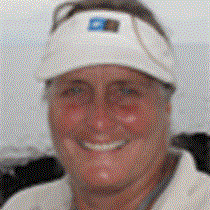Española Island
On our final day in the islands, we got off to a lazy start; we slept in and had a delicious and leisurely breakfast. Immediately following the meal we headed out to snorkel, kayak and/or enjoy some free time on the gorgeous white sand beach of Gardner Bay. As the snorkelling group hoped they would, some rowdy and playful sea lions joined us. In addition we saw rays, solitary brightly coloured kind angle fish and several species of schooling fish. The kayakers were escorted at times by sea lions and by the tiny, delicate storm petrels. We paddled along with the wind behind us, exploring the coastline and then happily returned to the ship in a Zodiac.
But the highlight of the morning was undoubtedly the time we all spent on one of the world’s most lovely, pristine beaches! We had a wonderful time wandering about on own, taking a few more photos of the impossibly cute sea lion pups, strolling on the fine white sand to the rocky beach-end or splashing in the surf with the sea lion kids. The brazen Española mocking birds hopped about, inspecting us and our gear, in search of anything possibly edible. With great reluctance we abandoned this beautiful beach and returned to the Islander for lunch.
In the afternoon we set off at 3:30 p.m. for a hike along a boulder strewn trail that led us first, past small beaches with many sea lions (on one beach there was a newborn pup with its umbilical cord still intact!), then through a Nazca booby colony (today’s photo is a Nazca chick) to an overlook of the blowhole, and finally along the edge of the waved albatross colony. We learned that Española island is free of introduced animals – though it was once over run by feral goats – and that the tortoises here were saved from the very brink of extinction. Fifteen adult tortoises, which are now breeding in captivity at the Darwin Station facilities on Santa Cruz Island, have produced over 1500 offspring that wander free here.
We did not find a wild tortoise today on Española, but just knowing that their population is slowly increasing and is out of danger of extinction was enough. At the cement dock we stepped off the shore of Galápagos and into the Zodiacs for the last time. As we motored out of the turquoise bay at Punta Suarez, it was impossible not to feel a bit melancholy; the expedition had ended with such a fabulous walk. We are leaving the islands, but because of the memories and experiences we have shared here, the islands will never leave us!
On our final day in the islands, we got off to a lazy start; we slept in and had a delicious and leisurely breakfast. Immediately following the meal we headed out to snorkel, kayak and/or enjoy some free time on the gorgeous white sand beach of Gardner Bay. As the snorkelling group hoped they would, some rowdy and playful sea lions joined us. In addition we saw rays, solitary brightly coloured kind angle fish and several species of schooling fish. The kayakers were escorted at times by sea lions and by the tiny, delicate storm petrels. We paddled along with the wind behind us, exploring the coastline and then happily returned to the ship in a Zodiac.
But the highlight of the morning was undoubtedly the time we all spent on one of the world’s most lovely, pristine beaches! We had a wonderful time wandering about on own, taking a few more photos of the impossibly cute sea lion pups, strolling on the fine white sand to the rocky beach-end or splashing in the surf with the sea lion kids. The brazen Española mocking birds hopped about, inspecting us and our gear, in search of anything possibly edible. With great reluctance we abandoned this beautiful beach and returned to the Islander for lunch.
In the afternoon we set off at 3:30 p.m. for a hike along a boulder strewn trail that led us first, past small beaches with many sea lions (on one beach there was a newborn pup with its umbilical cord still intact!), then through a Nazca booby colony (today’s photo is a Nazca chick) to an overlook of the blowhole, and finally along the edge of the waved albatross colony. We learned that Española island is free of introduced animals – though it was once over run by feral goats – and that the tortoises here were saved from the very brink of extinction. Fifteen adult tortoises, which are now breeding in captivity at the Darwin Station facilities on Santa Cruz Island, have produced over 1500 offspring that wander free here.
We did not find a wild tortoise today on Española, but just knowing that their population is slowly increasing and is out of danger of extinction was enough. At the cement dock we stepped off the shore of Galápagos and into the Zodiacs for the last time. As we motored out of the turquoise bay at Punta Suarez, it was impossible not to feel a bit melancholy; the expedition had ended with such a fabulous walk. We are leaving the islands, but because of the memories and experiences we have shared here, the islands will never leave us!




